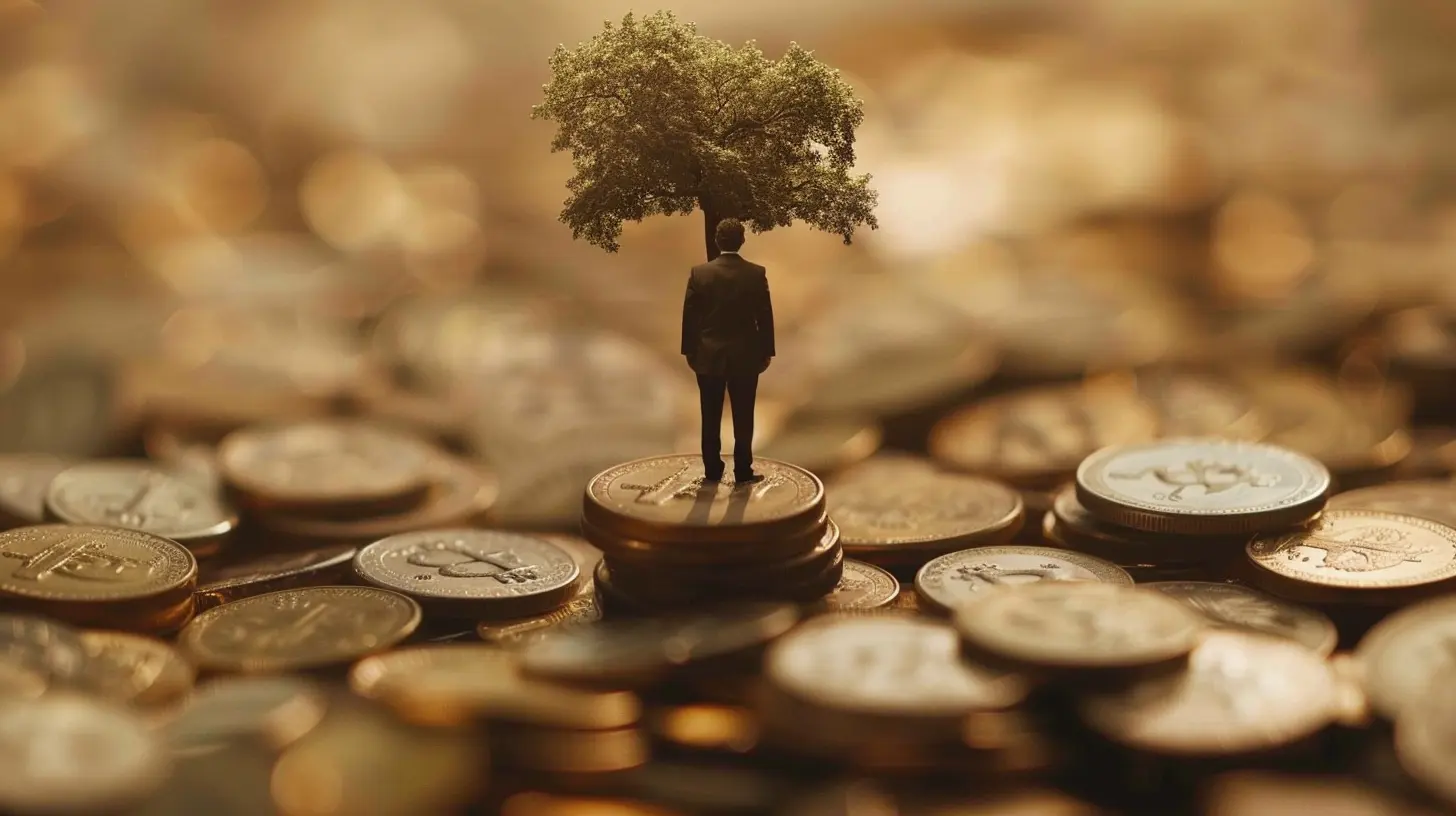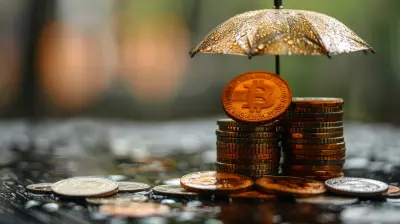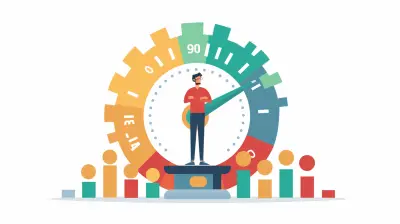How to Maximize Your Profits with Compound Interest
21 July 2025
Ah, compound interest — the magical force that Albert Einstein supposedly dubbed the "eighth wonder of the world." Whether he actually said that or not is still up for debate, but hey, the sentiment stands strong. Compound interest is one of the most powerful tools in the financial toolbox. It's like planting a tiny seed that ends up growing into a massive money tree — if you water it properly, of course.
So, how do you actually put compound interest to work for you? And how can you turn it into a profit-maximizing machine? Grab a cup of coffee, sit back, and let’s break it down, step-by-step in plain English. You're about to unlock the true magic of money.
What is Compound Interest? (And Why Should You Care?)
Let’s keep it simple. Compound interest is basically "interest on interest." Imagine you invest $100 and it earns you some interest. That interest gets added to your total balance, and then you earn interest on your new balance — rinse and repeat.It’s like a snowball rolling downhill. At first, it’s small, but over time, it gathers momentum and turns into a money avalanche. The key ingredient? Time.
Here’s a Quick Example:
Let’s say you invest $1,000 at an annual interest rate of 10%. After one year, you’ll have $1,100. But in year two, you earn 10% on $1,100, not just $1,000. That’s $110. So now you have $1,210. And it keeps going. You’re earning interest on your interest every single year.Sounds small at first, but fast-forward 30 years and that $1,000 becomes over $17,000. That’s the magic of compounding.
The Simple Formula You Need to Know
You don’t need to be a math whiz to understand compound interest, but here’s the formula if you like numbers:A = P(1 + r/n)^(nt)
Where:
- A = Final amount
- P = Initial principal
- r = Annual interest rate (decimal)
- n = Number of times interest is compounded per year
- t = Time in years
Okay, I know that’s a lot of letters. But don't worry — calculators exist for a reason. The real magic comes from understanding how to use this in real life.
Start Early: The Sooner, The Better
If you take away just one thing from this article, let it be this — start as early as you can.Time is everything in compounding. Even small contributions can grow into a fortune over time. Think of it like this: every dollar you invest in your 20s can be worth many times more than the same dollar invested in your 40s.
Let’s Put This into Perspective:
- Emily starts investing $200/month at age 25 and stops at age 35. She doesn't add any more money after that.- Jake starts investing $200/month at age 35 and keeps going until 65.
Who ends up with more money?
Surprisingly, Emily does — even though she invested for only 10 years compared to Jake’s 30. Why? Because she gave compound interest more time to work its magic.
Be Consistent and Patient
Compounding isn’t a get-rich-quick scheme. It’s more of a get-rich-slow-but-sure strategy.The key is to be consistent. Keep investing regularly — whether it’s monthly, quarterly, or annually. Don't worry if it's a small amount. Over time, those bits add up, and compounding does the heavy lifting.
And Here's the Tough Truth:
You won’t see lightning-fast growth in the beginning. That’s normal. But just like compound interest itself, your results will start to snowball. Fast-forward 10, 20, or 30 years and you’ll thank yourself for being patient.Reinvest Your Earnings
This is where a lot of people slip up. When you earn interest or dividends, reinvest them. Don’t cash them out, even if it’s tempting.Reinvesting ensures that your earnings keep working for you. It’s like having little employees that don’t take breaks — the more you reinvest, the bigger your workforce becomes.
Think of it this way: If your money is a factory, reinvesting is adding more machines that crank out even more money. The more you reinvest, the faster your factory grows.
Choose High-Yield Investments
Not all interest is created equal. A savings account earning 0.01% just isn’t going to cut it.To really harness the power of compound interest, you need decent returns. That usually means looking beyond regular savings accounts.
Some Options to Consider:
- High-Interest Savings Accounts or Certificates of Deposit (CDs) – Safe but low returns.- Index Funds or ETFs – Good long-term growth with lower risk than individual stocks.
- Stocks or Mutual Funds – Potentially higher returns, but with more volatility.
- Retirement Accounts (401(k), IRA) – Tax advantages + compounding = win-win.
The higher the interest (or return), the faster your money grows — but remember, higher returns often come with higher risk. Balance is key.
Take Advantage of Tax-Advantaged Accounts
Wanna keep more of your profits? Use tax-advantaged accounts like IRAs and 401(k)s. Not only do you get to grow your investments through compound interest, but you also shield them from taxes — either now or later.Traditional vs Roth:
- Traditional IRA/401(k): Pay taxes when you withdraw.- Roth IRA/401(k): Pay taxes now, enjoy tax-free withdrawals later.
Either way, your money compounds without being chipped away every year by Uncle Sam. That’s a big win.
Avoid Withdrawing Early
Whatever you do, resist the urge to touch your money. Early withdrawals from compound interest accounts don’t just hurt your balance — they reset your compounding progress.It’s like digging up a tree to check if it’s growing. You wouldn't do that, right? Same with investments.
Let your money sit. Let it grow. Keep watering it. Don’t check the pot every day.
Increase Your Contributions Over Time
As your income grows, your contributions should grow too. Even just a small increase each year can make a huge difference to your final total.Consider this:
- Year 1: $100/month
- Year 2: $110/month
- Year 3: $120/month
That slow, steady climb keeps your investments climbing too. Before you know it, you’re way ahead of where you started.
Watch Out for Fees
Here’s something that often gets overlooked — fees. They might seem small, but they can eat away at your returns like termites in your financial foundation.Be cautious of:
- High management fees in mutual funds
- Transaction fees when trading
- Hidden charges in investment apps
Always read the fine print. Even a 1% annual fee can cost you tens of thousands over a lifetime.
Use Automation
Let’s be honest — life gets busy. It's easy to forget to invest. That’s why automation is your best friend. Set up automatic contributions from your checking account to your investment account.Out of sight, out of mind — and your money keeps working behind the scenes.
You can even automate dividend reinvestment and portfolio balancing. The less you need to think about it, the more consistent you'll be.
Stay the Course (Even When Markets Are Wild)
Markets go up and down — that’s just how the game works. The key to maximizing compound interest is staying invested even during stormy weather.Trying to time the market is like trying to guess when it’ll rain 6 months from now. You might get lucky, but chances are, you’ll miss the big gains.
Stick with your plan. Keep your long-term focus. Compounding rewards the patient.
Real-Life Stories: The Power of Patience
Let’s talk about Grace Groner — maybe you’ve heard her story. She was a secretary who bought $180 worth of stock in the 1930s. She held onto it. Reinvested the dividends. And decades later? Her investment was worth over $7 million.No lottery. No crypto. Just patience and compound interest.
Or the story of Ronald Read — a janitor who amassed $8 million simply by saving and investing over time. Again, not flashy. Just smart.
These aren’t unicorn stories. They’re just people who understood how compounding works — and stayed the course.
Final Thoughts: Grow Wealth the Smart Way
Compound interest is the ultimate wealth-building cheat code — and it’s available to anyone willing to use it. No fancy degrees, no insider knowledge, just consistent action.Start early. Invest regularly. Reinvest your earnings. Be patient. Avoid fees. And for heaven’s sake, don’t panic when the market takes a dip.
If you're not already putting compound interest to work, today is the best day to start. Not tomorrow. Not next year. Today.
Even a little bit now can turn into a lot later. The money tree won’t plant itself — but once you do, just wait. The fruits are worth it.
all images in this post were generated using AI tools
Category:
Compound InterestAuthor:

Angelica Montgomery
Discussion
rate this article
1 comments
Graham McCaw
Compound interest: the ultimate money magic! Stop letting your cash sit idle—make it work harder than your ex!
August 10, 2025 at 3:25 AM

Angelica Montgomery
Absolutely! Compound interest truly turns your money into a powerful asset. Start investing today to unlock its potential!


